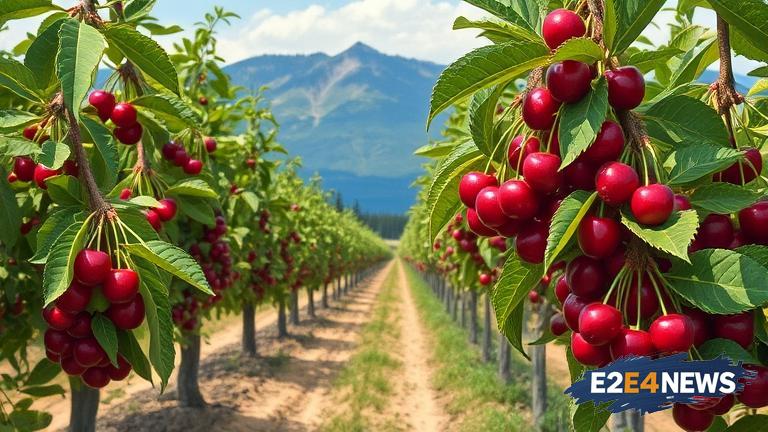Montana cherry growers have managed to avoid a labor shortage, albeit narrowly, as the industry continues to grapple with the impact of Trump policies on worker availability. The cherry harvest season, which typically runs from mid-July to early September, is a critical period for growers who rely heavily on manual labor to pick and pack their crops. However, the Trump administration’s immigration policies have created uncertainty and concern among workers, many of whom are migrant laborers. The policies, which include stricter border control and increased scrutiny of worker documentation, have led to a decline in the number of available workers. Despite these challenges, Montana cherry growers have reported that they have been able to secure the necessary labor to bring in their crops. This is due in part to the efforts of local farmers and industry leaders, who have worked to recruit and retain workers. Additionally, some growers have turned to innovative solutions, such as mechanized harvesting and worker training programs, to mitigate the impact of labor shortages. The Montana cherry industry is a significant contributor to the state’s economy, with the crop generating millions of dollars in revenue each year. The industry is also an important source of employment, with thousands of workers hired to work on cherry farms and in related industries. However, the long-term sustainability of the industry is uncertain, as growers continue to face challenges related to labor, climate change, and market fluctuations. The Trump administration’s policies have also had a broader impact on the agricultural industry, with many farmers and growers reporting difficulties in finding and retaining workers. This has led to calls for comprehensive immigration reform, which would provide a more stable and secure workforce for the industry. In the meantime, Montana cherry growers are breathing a sigh of relief, having narrowly avoided a labor shortage that could have had devastating consequences for their crops and livelihoods. The industry is now looking to the future, with many growers exploring new technologies and strategies to reduce their reliance on manual labor. This includes the use of automated harvesting systems, which can help to increase efficiency and reduce labor costs. However, these solutions are not without their challenges, and many growers are concerned about the potential impact on workers and the local economy. As the Montana cherry industry continues to evolve and adapt to changing circumstances, it is clear that the impact of Trump policies will be felt for years to come. The industry is urging policymakers to take a more nuanced and comprehensive approach to immigration reform, one that balances the need for border security with the need for a stable and secure workforce. In the short term, growers are focused on bringing in their crops and preparing for the next harvest season. However, the long-term sustainability of the industry will depend on the ability of policymakers to address the underlying challenges facing the industry. This includes not only labor shortages, but also climate change, market fluctuations, and other factors that can impact crop yields and profitability. As the industry looks to the future, it is clear that there will be both opportunities and challenges ahead. With the right policies and support, the Montana cherry industry can continue to thrive and contribute to the state’s economy. However, if the challenges facing the industry are not addressed, there is a risk that the industry could decline, with significant consequences for workers, growers, and the local economy.





